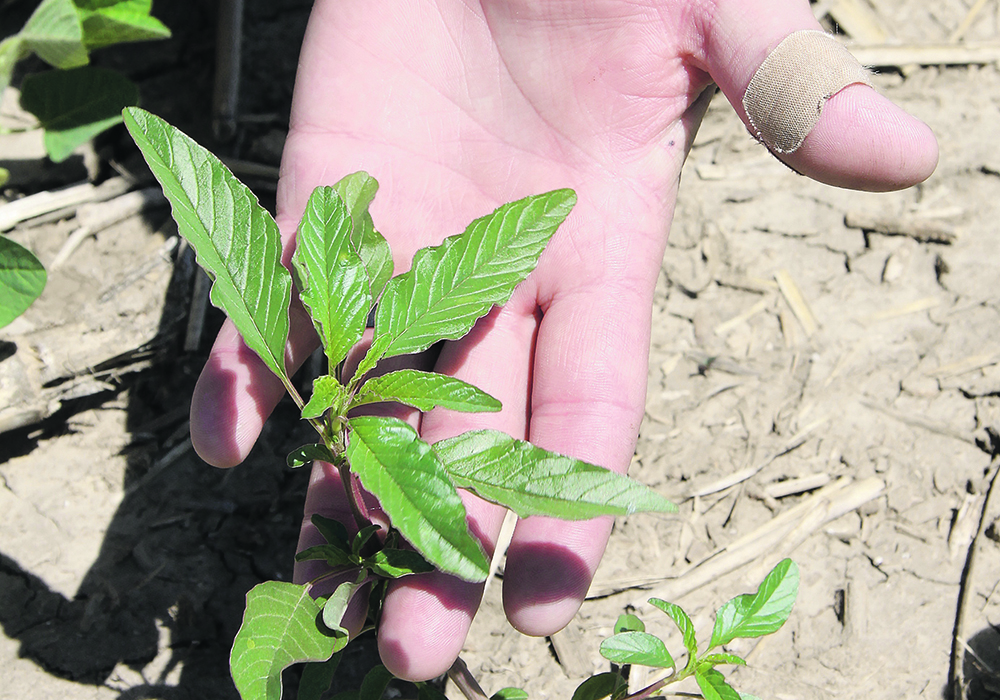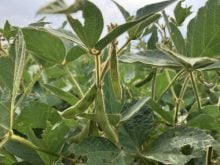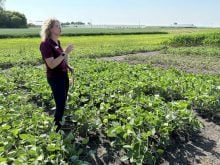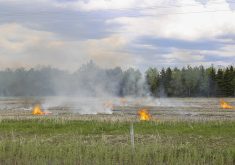Weeds resistant to herbicides are arriving on the Prairies through spring flooding, migratory geese and dirty equipment
If farmers are used to doing two glyphosate passes per year and call that “weed control,” they’ll face a shock if herbicide tolerant weeds take over their fields.
Their weed control bill could jump from $20 per acre today to $150 if they have to make more passes and include multiple products.
“That’s a game changer in terms of profitability,” Brunel Sabourin, the lead agronomist for Antara Agronomy, told farmers in the Red River Valley facing an onslaught of herbicide resistant tall waterhemp.
“Don’t let a small problem become a big one.”
Read Also

Stacking Canada up on gene editing livestock
Canada may want to gauge how Argentina and other countries have approached gene editing in livestock and what that has meant for local innovation.
Just from driving around nearby fields this summer, Antara agronomists could spot 17 fields already hosting emerging waterhemp infestations. If left uncontrolled, they can become a nightmarish problem, as seen in the U.S. Midwest where farmers are attempting to fight the resistant weeds in corn and soybean fields.
Waterhemp and other resistant weeds have been spreading north along the Red River. Spring flooding allows the weed’s seeds to travel far and spread.
They are also brought in by migrating geese, or “devil chickens,” which poop on farmers’ fields, and from dirty equipment moving between fields and farms.
Sabourin said farmers in the Red River Valley have advantages over the average Midwest farmer. While many farmers south of the line just have a two-crop rotation, farmers in the valley tend to run four or five crops. That allows for better weed control since more chemicals are involved.
Farmers in the valley also grow crops with narrower row spacings, which provide fewer opportunities for weeds to spring forth and take over since there is more ground cover.
They also have time and awareness of the problem, something many American farmers did not get. Farmers in Manitoba can hit weeds when they appear and pull small patches before they become field-wide problems.
If farmers are stuck with unseeded acres due to flooding — a common occurrence in the valley — they should seed a cover crop just to prevent weeds from establishing.
The spiralling cost of a herbicide-resistant control program comes from having to probably make five passes a year rather than two, and employing multi-mode mixes.
Even that will not be sufficient to contain the problems from multi-resistant weeds like waterhemp.
“This is a problem that can cost you the farm,” said Sabourin.
Antara had 55 possible cases of waterhemp tested in Manitoba, with a few also being tested in Ontario. Alarmingly, some samples showed resistance to Group 14 chemicals, which Sabourin has been hoping can be used as pre-emergent treatments. The tests only checked for susceptibility to foliar applications, so pre-emergent efficacy isn’t gone yet.
“A lot of these products may still work…, which is a good thing,” said Sabourin.
















